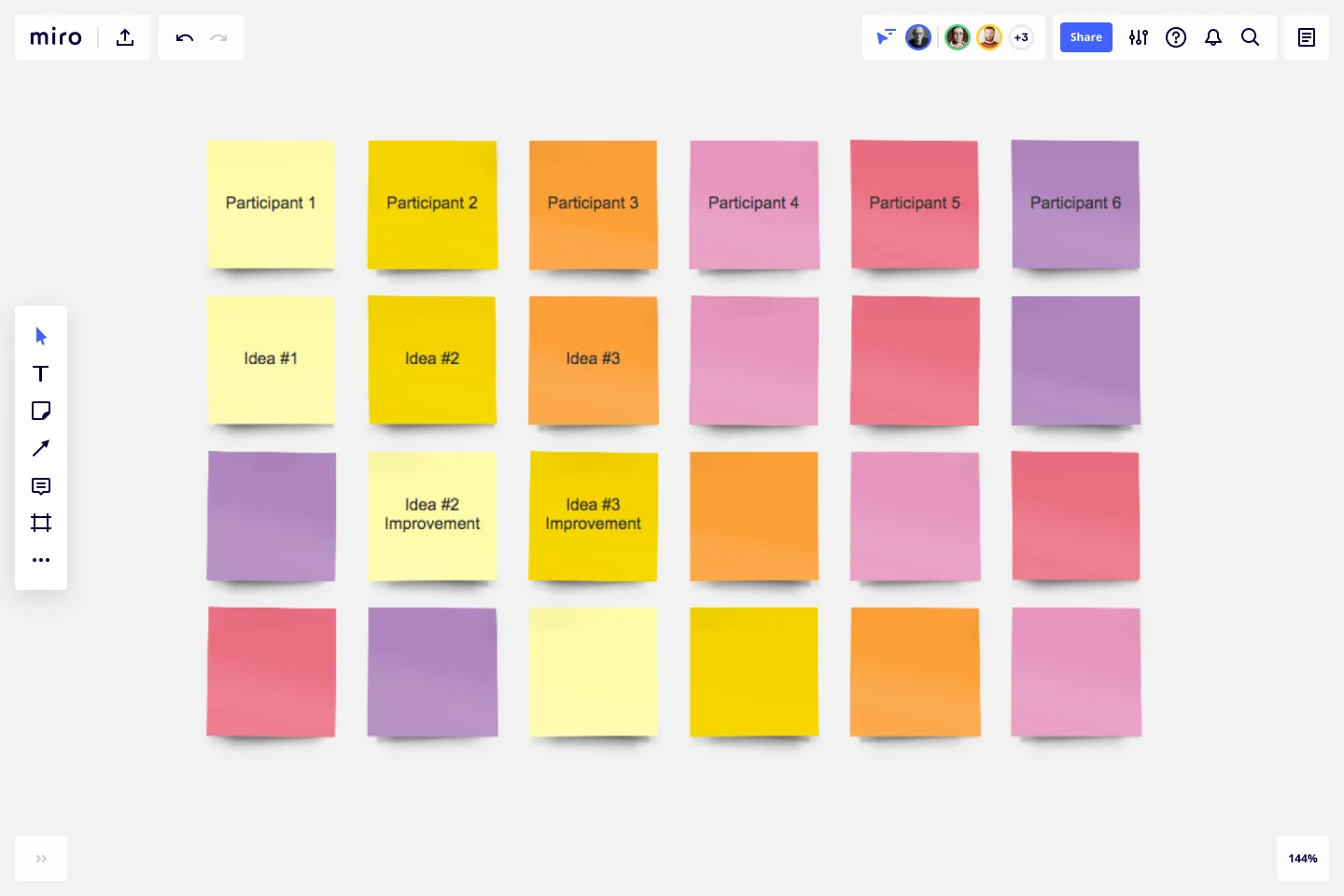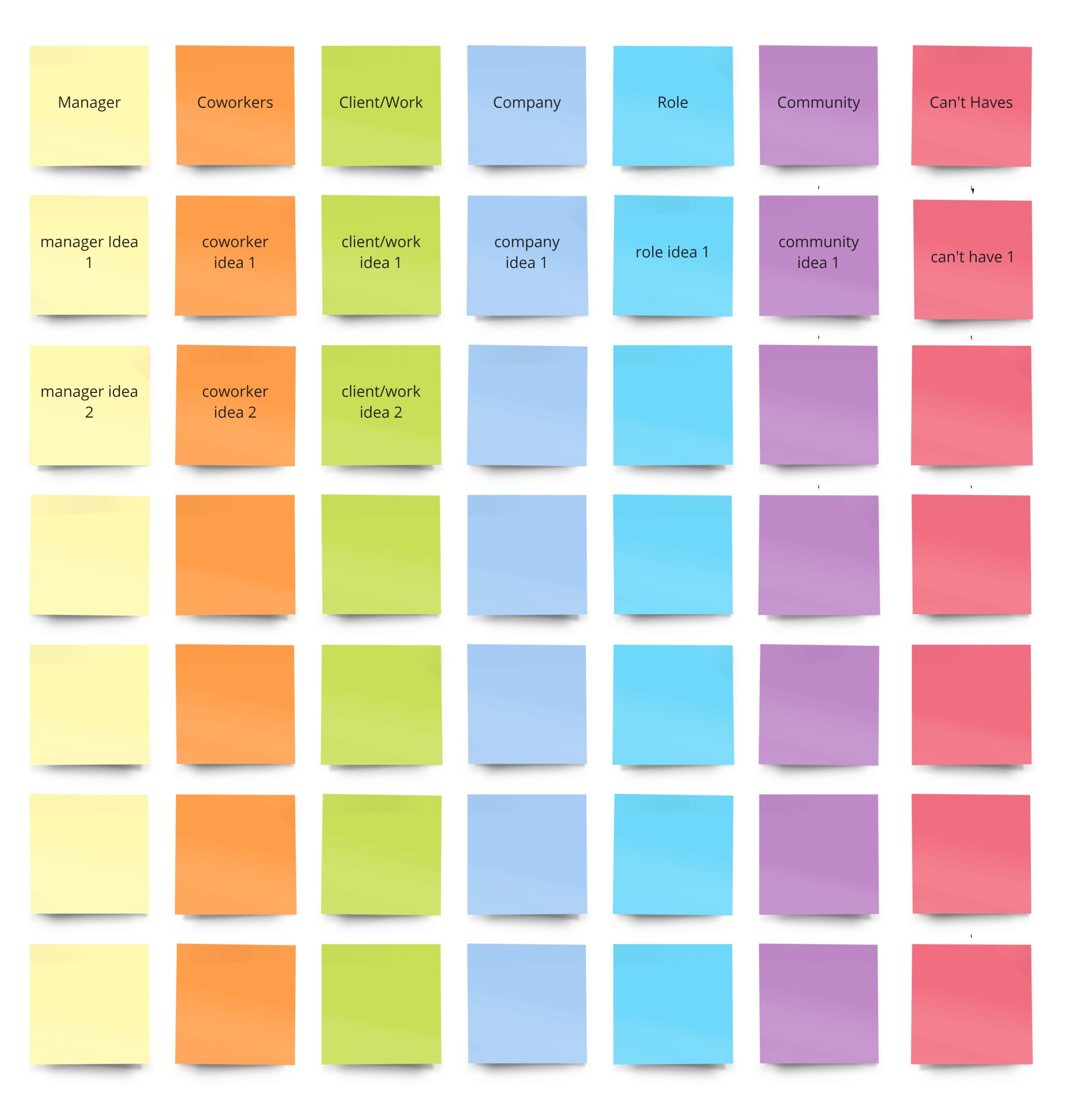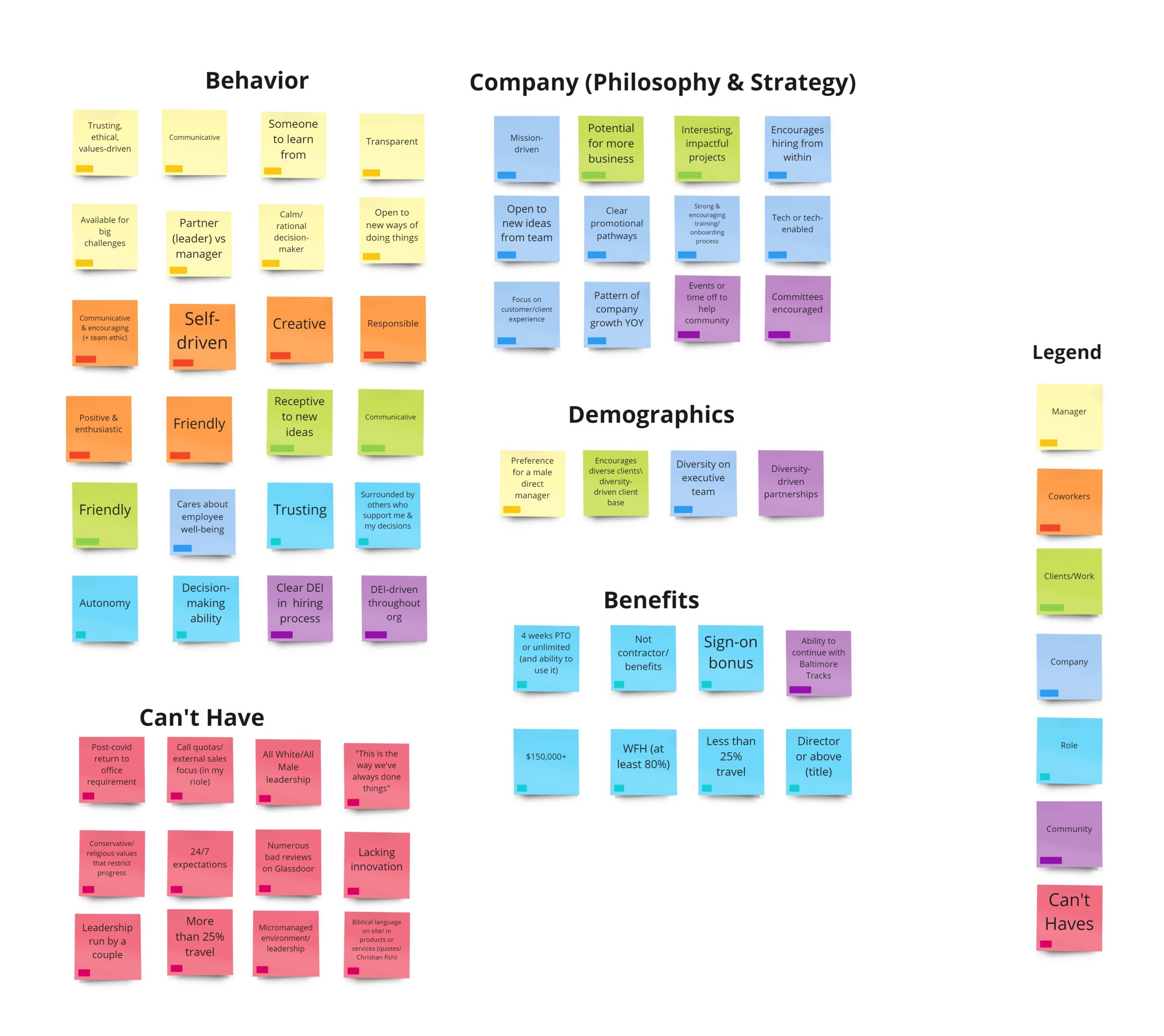A while back, I made a Career Needs spreadsheet that helped me establish a list of my Must Haves, Nice to Haves, and Can’t Haves related to my job hunt. The spreadsheet was focused around the role I’ve been looking for and the type of company I want to be a part of. It was intended to help me clarify which companies aligned with my values (and which did not). I have also used it to clearly explain my needs to career coaches and recruiters.
Developing the spreadsheet was helpful, but I later decided to take it a step further and map it out on a Miro board. I started with the Brainwriting template which looks like this (image borrowed from Miro…I hope they don’t mind):
This template is generally used for team ideation, but I selected it because its layout was ideal for brainstorming and was an easy way to grab a rainbow assortment of stickies and rearrange as needed. That’s one of the great things about Miro – use it for whatever you like! The templates are just there to get your ideas rolling.
I first thought through what my spreadsheet wasn’t providing me (no need to redo the work if transferring it to Miro didn’t elevate it). Along with identifying my Must Haves, Nice to Haves, and Can’t Haves, I decided to consider more than just the role and the company since there are so many elements that are important in a healthy work environment. The categories I came up with were: Company, Role, Coworkers, Manager, Clients, Community (initiatives/impact), and the Can’t Haves (since those needed to be pulled away from the other ideas for clarity).
I took the stickies at the top of the Brainwriting board to mark the categories and changed the colors so they were lined up by column. At that point, it looked like this:
Next, I added all of the content from the spreadsheet under the relevant categories, then came up with additional ideas so each category had a similar number of items.
Once I had all my ideas on the board, I started looking for themes. I identified that Behavior, Company Philosophy & Strategy, Demographics, and Benefits were key areas, and noticed how some categories had overlapping concepts (for example, communication is a critical factor for me all across the board, but especially with my manager, clients, and coworkers.
I rearranged the stickies, giving me the ability to see the non-negotiables from my list and to envision what my ideal future work environment would look and feel like. Who do I want to work with? What are the company’s values? What kind of support do I want? What types of clients energize me? What’s critical to my happiness and well-being?
Here’s what it looked like when I finished: 
While rearranging into these new categories took the board completely out of the Brainwriting layout, I had accomplished what I needed from that initial format and was able to turn it into something that made more sense for me. That’s the great thing about visual storytelling with a tool like Miro! You may start with one format and end up with something completely different, but the process of organizing and reorganizing helps these ideas stick (they are stickies, after all), expand, and bloom into a far clearer picture than you had in the beginning.
I also believe that visualizing what you want (either literally or figuratively) helps you achieve your goals. By using a visual tool to expand on my career needs, I’ve been able to hone in on what matters most to me. Being a highly visual person, it helps these concepts attach to my brain so they’re at the forefront of my mind when I’m job hunting. It has also provided me with a great deal of clarity when I’m speaking with recruiters, coaches, and hiring managers, and has enabled me to spot red flags with companies or potential managers before I got too far in the hiring process.
If you want to work on one yourself, here are the basic steps:
(1) Create a Miro board (I used the Brainwriting template). You can set up a free account and do a few boards. I’ve upgraded to the consultant level so I have access to more features.
(2) Figure out the key areas that are important in your next role. My categories were: Company, Manager, Role, Coworkers, Clients, and Community, plus my Can’t Haves.
(3) Make stickies for each category and identify a color for each.
(4) Come up with a list of attributes for each category and write them on stickies that are color-coded to match the relevant category.
(5) Look for over-arching themes that come up repeatedly. I used Behavior, Company Philosophy & Strategy, Demographics, Benefits, and Can’t Haves. Recognize which themes are essential, nice additions, and the absolute “NOs” for you.
(6) Move the category stickies that initially topped each column over to the right and turn them into a legend.
(7) Go into a job board like LinkedIn and look for postings that correspond to things on your list. Save the role, then go to the company’s website and see if you can find additional attributes that match your goals.
Happy hunting!
humanizing technology through thoughtful, strategic leadership

Meredith Bennett (she/her)
I create a collaborative, tech-driven, highly efficient work environment where team members are supported and encouraged to think bigger and do better for enterprise-level clients.


